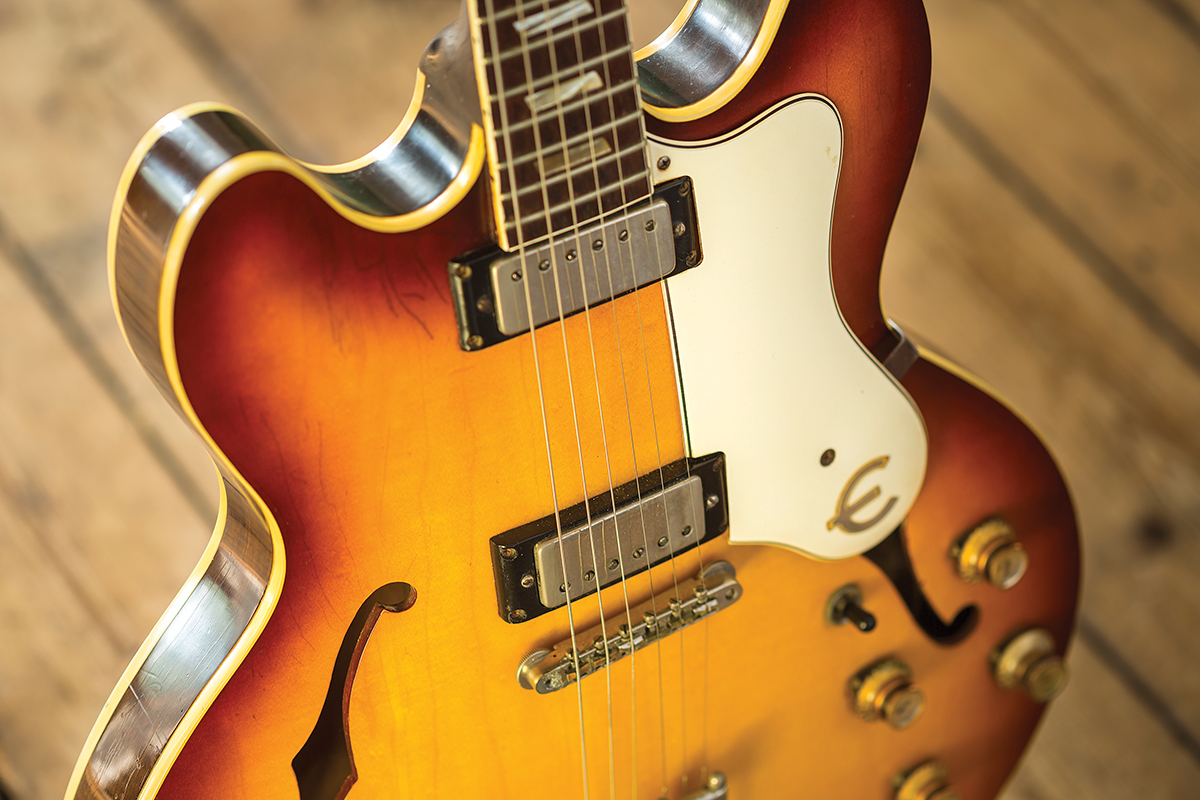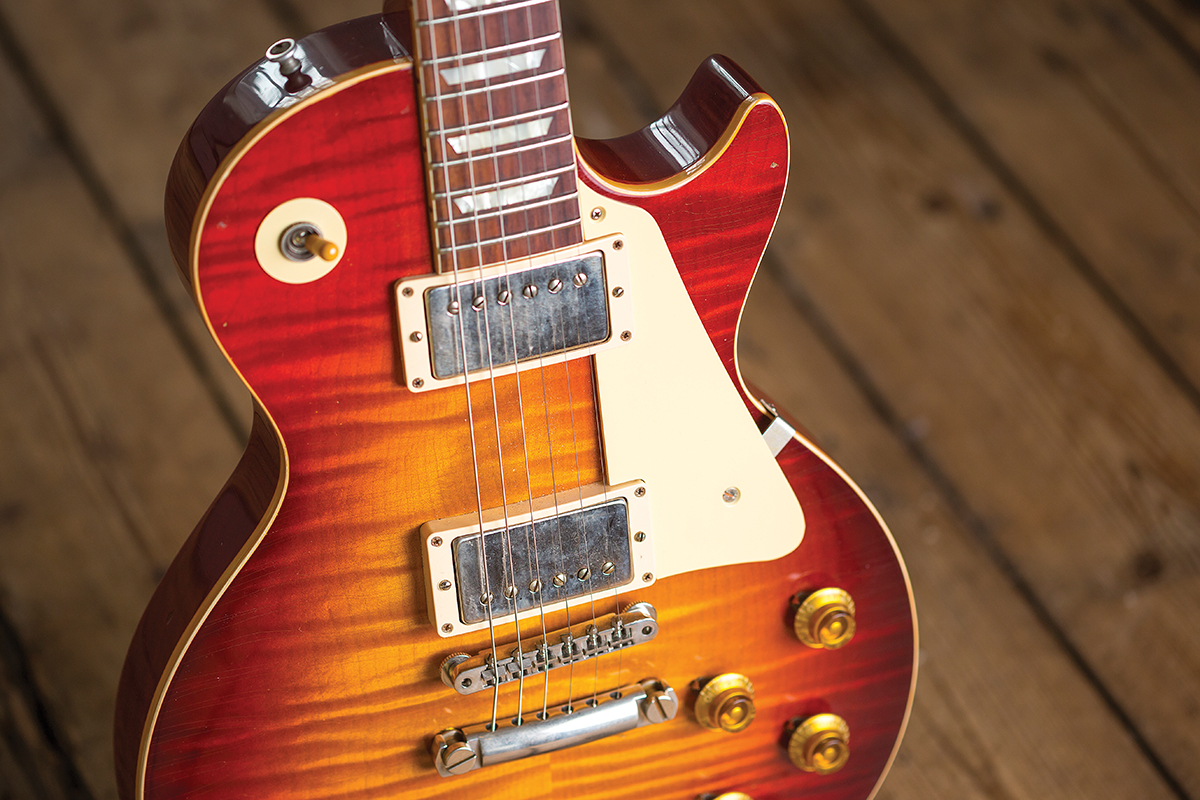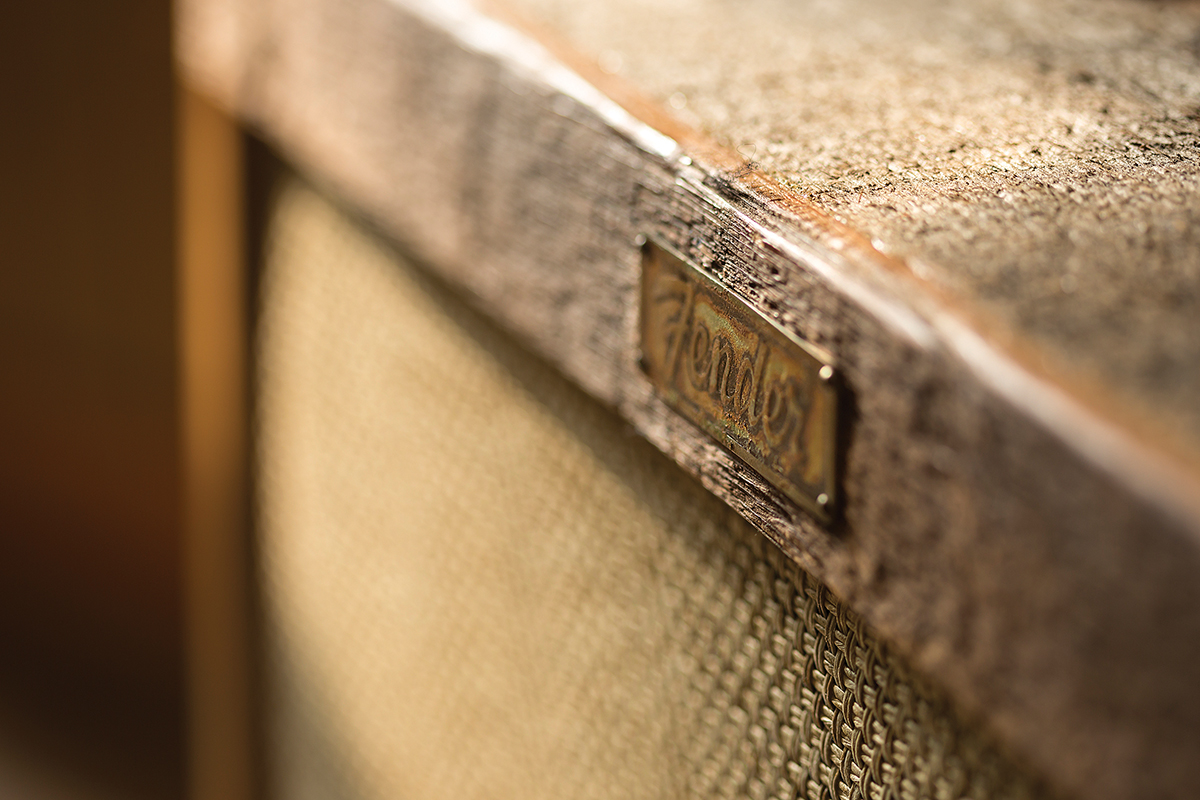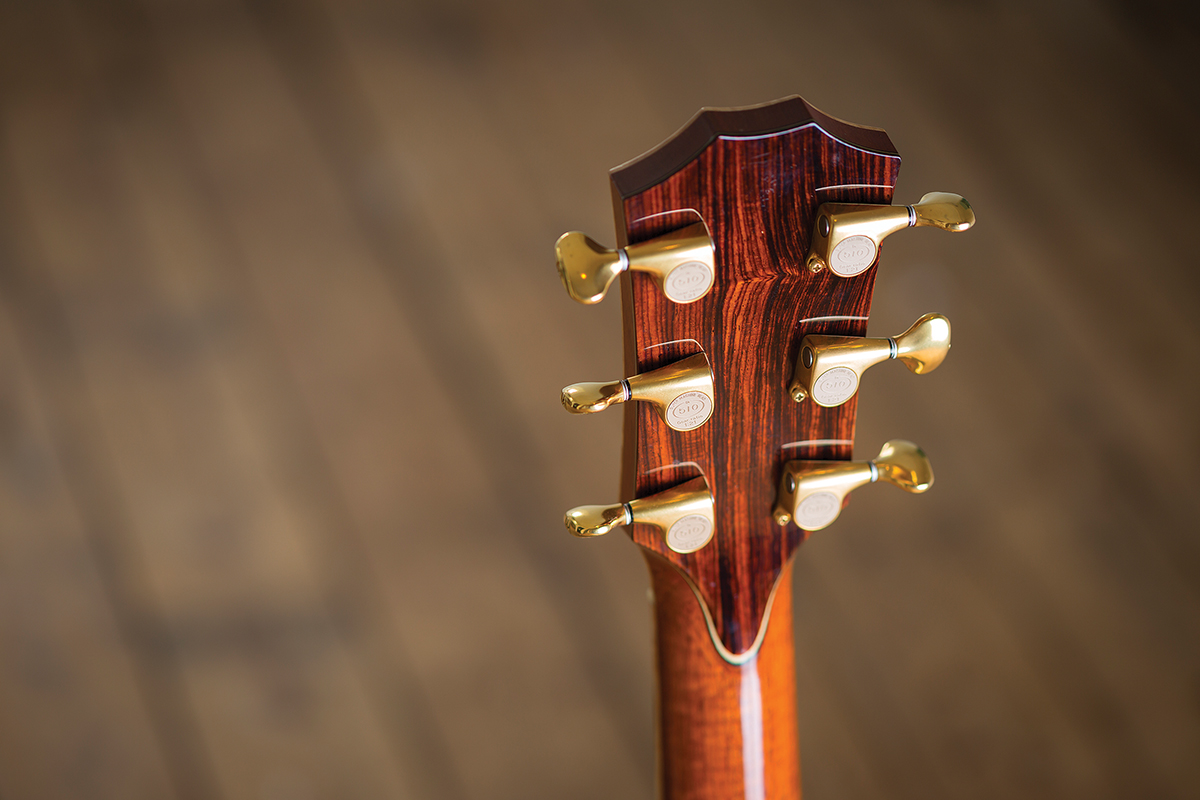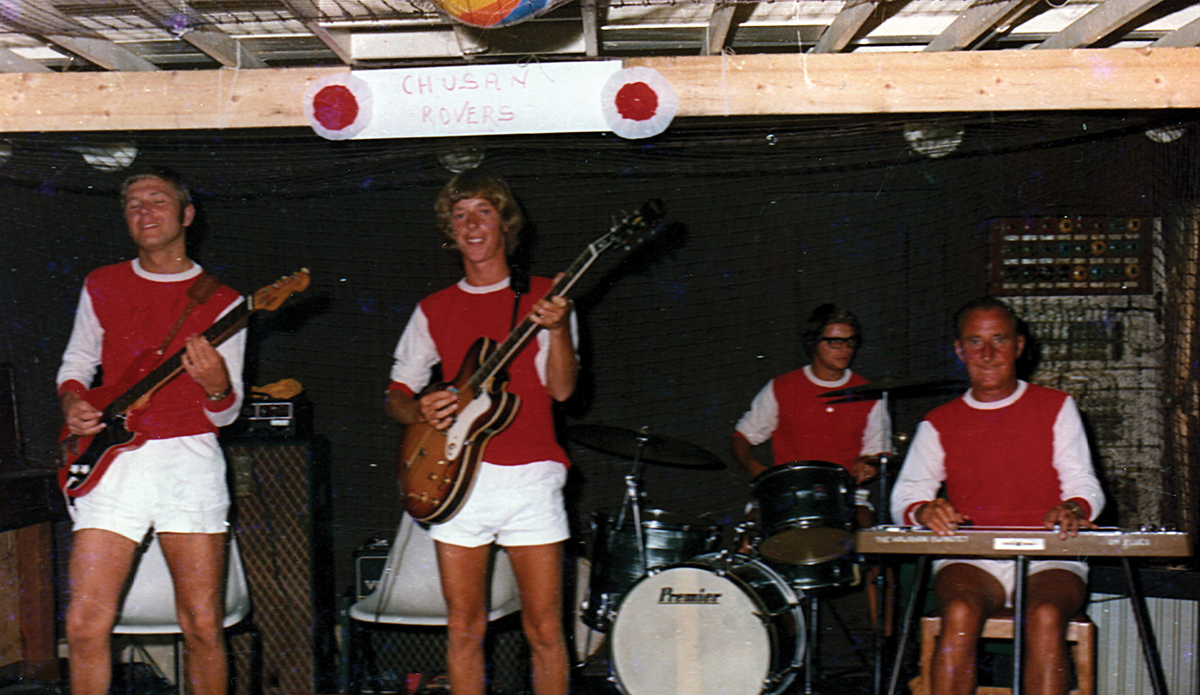Private Collection: David Plues
Not all guitar collections have to be sprawling exhibitions of the six-string art from. As the choice collection of instruments belonging to David Plues proves, small can be beautiful, too…
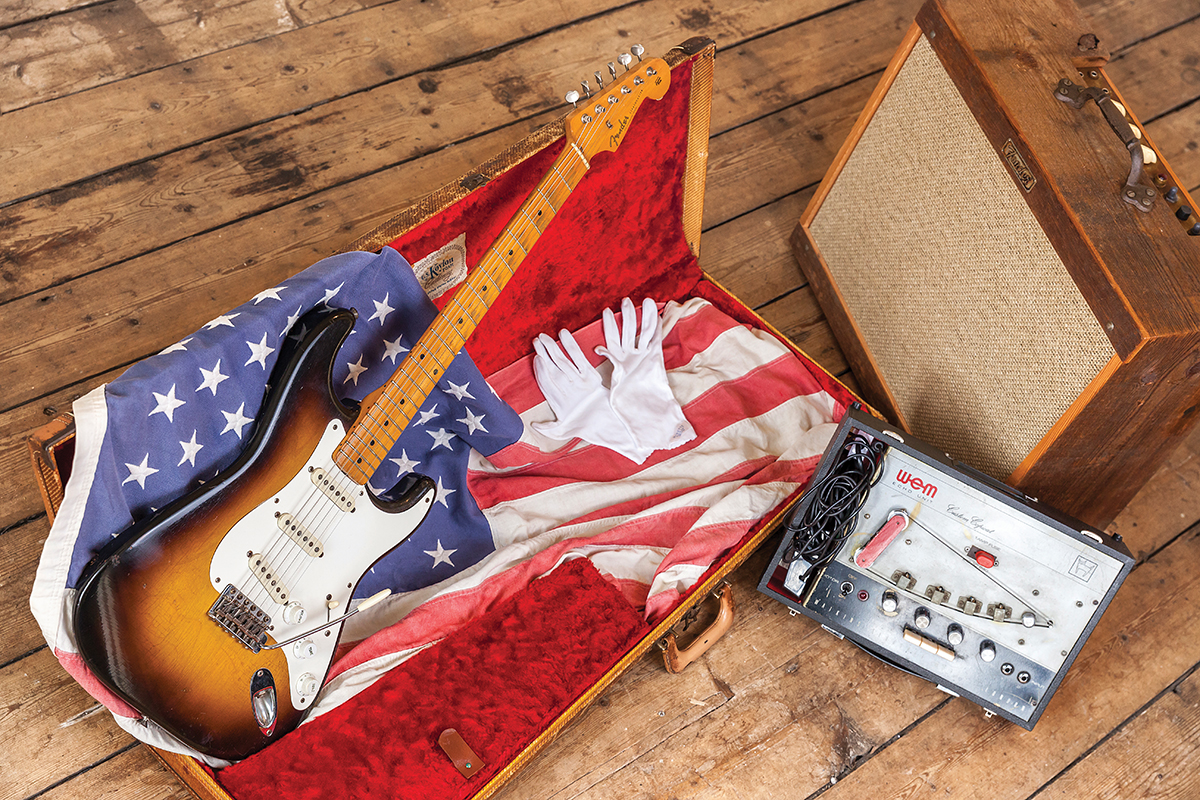
G&BCollections David Plues
Photography Mark Alexander
It’s fair to say that David Plues knows a thing or two about guitars. His ingrained knowledge of vintage instruments is a remarkable compendium of dates and serial numbers curated over years of playing the most sought-after six-string incarnations known to man. Yet despite his formidable understanding of some of the world’s most prized guitars, Plues remains unassuming; a retired musician who’s happy to spend his days perusing guitar shows, occasionally picking up a rarity for his collection.
“This must be one of the smallest collections to appear in the magazine, but each instrument has an interesting history dating all the way back to the 1930s,” he says. We have decided to meet in a former cotton-spinning mill, which itself dates back to 1788.
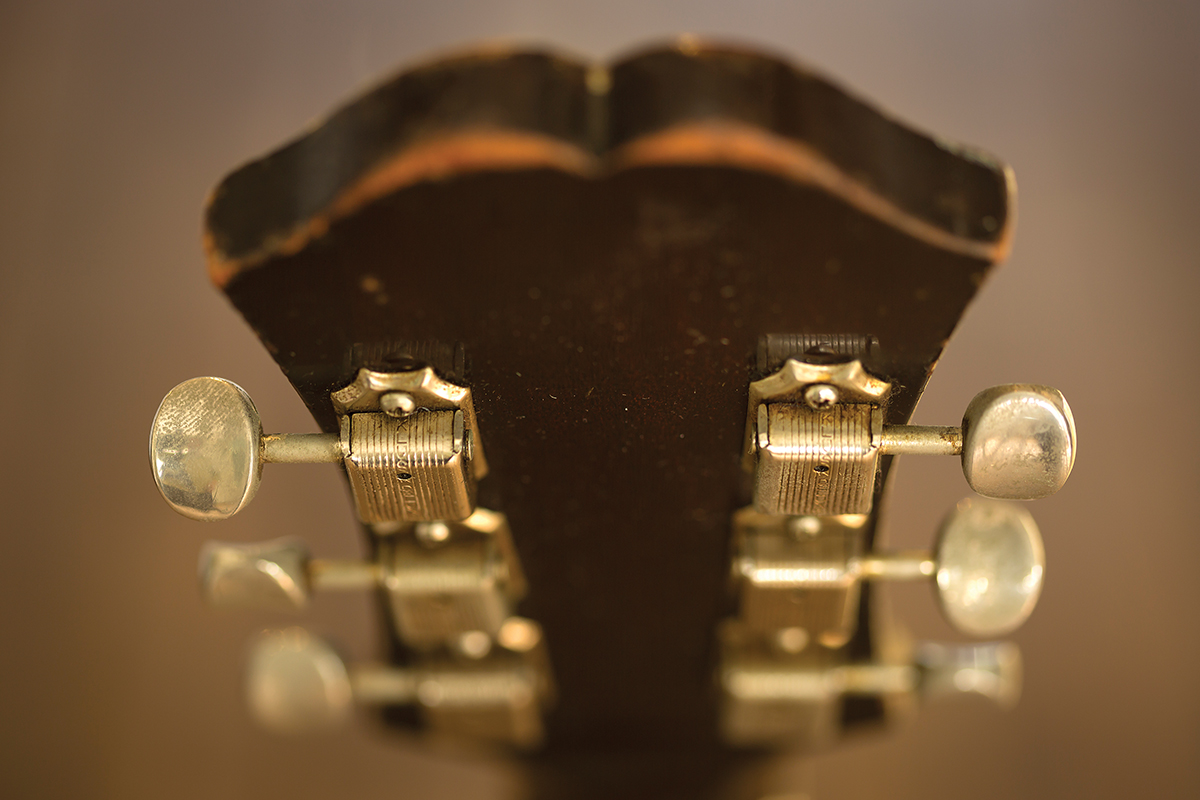 The impressive building is now run as a visitor and exhibition centre by Dumfries and Galloway council and is full of displays showcasing the glory of the mill’s industrial past. The poignancy of the venue is lost on no-one.
The impressive building is now run as a visitor and exhibition centre by Dumfries and Galloway council and is full of displays showcasing the glory of the mill’s industrial past. The poignancy of the venue is lost on no-one.
David’s dad bought him this Epiphone Riviera new in 1965 for 220 guineas and it was his faithful sidekick for two decades of cruise ship gigs
As well as contributing to Guitar & Bass on occasion, Plues also applies his knowledge to the Burst Believers series of books, and creates videos detailing some of the most eclectic and mouth-watering guitar collections on the planet. As a result, he gets up close and personal with guitars that are docketed with price tags punctuated with a comma or two.
Riviera Cruising
Despite the AAA access to some of the most stunning guitars ever made, one instrument has never left his side; an Epiphone Riviera which he acquired in 1965. “It was the most thing expensive in the shop,” he recalls. “That was when the regulations had eased off and American imports were being let in.
 As a result, the shop was full of sunbursts and custom-coloured Strats. But my dad said a Strat was just a plank of wood, and he directed me to the larger hollowbodies. But, I didn’t want a jazz guitar. I was young and hip; I didn’t want a deep Gibson ES-175. The store was full of Stratocasters for 156 guineas, but I chose the Epiphone Riviera at 220 guineas, which happened to match my bass player’s Epiphone Rivoli.”
As a result, the shop was full of sunbursts and custom-coloured Strats. But my dad said a Strat was just a plank of wood, and he directed me to the larger hollowbodies. But, I didn’t want a jazz guitar. I was young and hip; I didn’t want a deep Gibson ES-175. The store was full of Stratocasters for 156 guineas, but I chose the Epiphone Riviera at 220 guineas, which happened to match my bass player’s Epiphone Rivoli.”
Gibson Mark Knopfler 1958 Les Paul Standard VOS
Plues would eventually learn to love the curves of the Fender, but not before taking his Riviera out on the road for 20 years travelling around the world working for the likes of P&O Cruises. He played his Epiphone initially through a Burns 2×10, but replaced that with a Vox AC30 Top Boost. His set-up was simple but effective, and remarkably resilient.
“I carried no spare guitar, no spare valves or parts. A friendly amp engineer in Sydney re-valved my amp in exchange for an early wah pedal,” he recollects. “When departing from Sydney Harbour, we performed on the open decks to huge crowds sending off their loved ones. This was in the heat of the day, often in temperatures of around 100°F.
 The Epiphone must have suffered, but it never let me down. I still have it with no neck breaks or alterations. Plugged direct into an AC30 and turned up to nine, the tone was wonderful. The combination of mini-humbuckers, centre block and a Frequensator tailpiece adds up to a great blues tone with plenty of control direct from the guitar.”
The Epiphone must have suffered, but it never let me down. I still have it with no neck breaks or alterations. Plugged direct into an AC30 and turned up to nine, the tone was wonderful. The combination of mini-humbuckers, centre block and a Frequensator tailpiece adds up to a great blues tone with plenty of control direct from the guitar.”
Rhythm Of Life
Plues started playing guitar at the age of 12 years old. “The house was full of guitars,” he explains. “My dad was a steel guitarist who was very much into Hawaiian guitar – I’ve still got his 78s of Sol Ho‘op‘ii and Harry Brooker. He used to build his own steel guitars and wound his own pickups in the kitchen. I grew up surrounded by records and music.”
When his dad, who was a gigging musician, needed a rhythm guitarist, he would enlist his son to sit behind him on stage to provide accompaniment. It was an apprenticeship that would stand him in good stead when he later became a journeyman musician himself. It was such an important period, that he still proudly displays his father’s Roy Smeck Concert ukulele, which has been in his family since 1937 and on which he first started to learn music at the tender age of eight.
Gibson Les Paul Collectors Choice #5 ‘Donna’
“I’ve played in country bands, I’ve played in jazz bands, I’ve played in rock bands. I’ve played in terrible bands and I’ve played in some very good bands. I’ve done it all,” says Plues, who eventually retired his Epiphone in favour of a Strat. “For a long time, my working guitar was a Clapton Strat, just because it was very flexible. When you’re playing in a function band that has to cover every type of style, that Strat did it.”
Plues plied his trade for 30 years covering just about every style of music to every kind of audience. He retired in 1990, and by then he’d had enough. So, the Strat and his Mesa/Boogie stack were sold. “I sold everything but my Epiphone, my Copicat and the ukulele,” he confirms.
Lighting The Fire
The next 20 years saw Plues take a well-earned break from music. It was a time to reflect and enjoy retirement, but the passion that had been instilled in him by his father would resurface when a friend persuaded him to visit the Arlington Guitar Show in Texas. “I regained my interest in guitars in 2008,” he remembers.
“A friend had been to the Arlington Guitar Show and said it was unbelievable. He said it was so big it would take us three days to go round it. So I went to see and right enough it was fantastic. Mind-blowing. Every dealer in the world goes to Arlington. Norman Harris from Norman’s Rare Guitars goes there to stock his shop and buys 60 vintage guitars in a day.”
David’s 1957 Fender Stratocaster came with an American flag, in which the original owner had wrapped the guitar during the US evacuation of Vietnam in 1975
A fire had been lit once again. Before he knew it, Plues was actively seeking out a vintage Strat but found them overpriced or plagued by issues associated with rewound pickups or changed pots. Then he found a 1957 Strat, which he describes as “all-original and 8/10 condition”, with a truly remarkable backstory.
“Playing it through a small valve amp or an older Twin Reverb is very satisfying,” he says. “The guitar originally belonged to a US Master Sergeant who served in Vietnam and was one of the last to be airlifted from Saigon on the 29 April 1975.
The most recent addition to David’s collection is this Fender Custom Shop Tobacco Barn Tone Monster amplifier
They were based at the US Embassy or the CIA HQ, which features in the famous photo of the ladder leading to the helicopter. The main official US Embassy flag was removed when the US Ambassador was ordered to evacuate. The flag that came with the ’57 Stratocaster was probably from one of the several guard rooms that surrounded the American Embassy grounds.”
 We’ve all encountered a guitar with a tale that seems too far-fetched to be true, but David did his homework. “The story was verified by the daughter of the guitar’s original owner,” he confirms. “The guitar had been wrapped in the flag since that date.”
We’ve all encountered a guitar with a tale that seems too far-fetched to be true, but David did his homework. “The story was verified by the daughter of the guitar’s original owner,” he confirms. “The guitar had been wrapped in the flag since that date.”
Sourcing a vintage guitar from the 1950s that had not only survived the ravages of time but also the chaotic aftermath of the Vietnam War is a remarkable feat. But its ability to endure isn’t its most noteworthy quality – it’s the tone. Full of the brightness you would expect from a Strat, the ’57 sunburst is blessed with a deep resonance that just makes it sing.
It’s a beautiful example, benefitting from a wonderfully generous maple neck and, of course, a history covering seven decades. “I bought it because it was the best-sounding Strat I had heard. It is totally clean, 100 per cent, and a superb guitar.”
 ’Burst To Last
’Burst To Last
Plues was back in the game as a reinvigorated collector with an eye for something special. His trip to Arlington in 2008 had not only sparked his interest in guitars, but had also given him the opportunity to forge friendships with other like-minded enthusiasts. One in particular led to a collaboration that would result in a valuable addition to his collection.
“In 2008, I met Tom Wittrock, who is a big dealer and has some of the nicest ’Bursts on the planet. Two years later, I went to his house to make a DVD about his collection,” Plues says.
In the same year, the Gibson Custom Collector’s Choice series was launched. The idea was to meticulously model famous originals owned by collectors with Wittrock being one of the people Gibson contacted. Attention grabbed, Plues was keen to get his hands on a replica of Wittrock’s 1959 Les Paul, called Donna.
Taylor Cocobolo GS Fall Limited
“A fairly recent addition to my collection was the Gibson Les Paul Collectors Choice #5 133 which I arranged to pick up at the Arlington Guitar Show in 2015,” he says. “I had the advantage of placing the guitar next to the original Donna and was initially disappointed.
The #5 133 was too dark and the wrong centre yellow had formed a poor sunburst. It was not what I was expecting. Edwin Wilson, the Custom Shop manager, took a look and agreed the finish was not all it should be and offered to take it back to Nashville to get the Custom Shop to refinish the top. I was happy with this, because I recognised that the actual maple cap was an exceptional example with a great flame.”
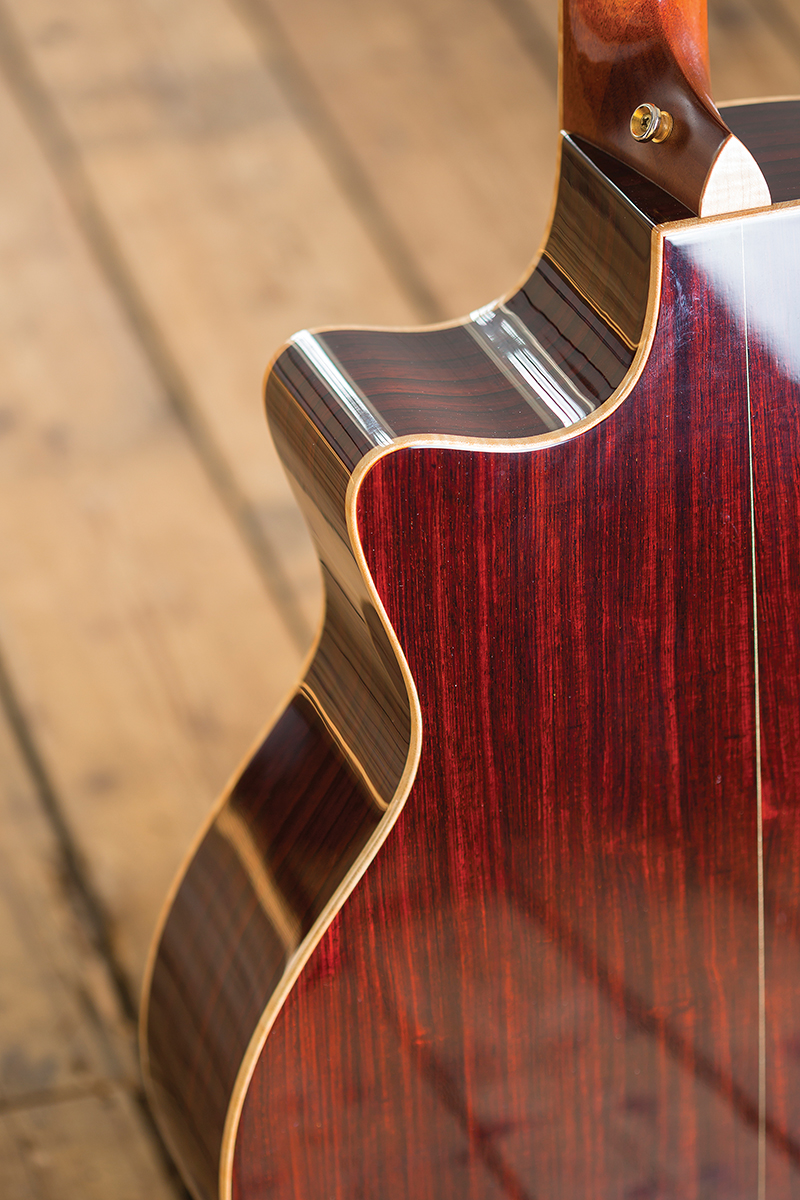 The work was duly completed and the #5 133 (version two) was delivered to a happy Plues. “The guitar plays with all the quality you expect from a top-line Custom Shop instrument and after years of playing Fenders, the volume and tone variations available from the guitar were a reminder of my years playing the Epiphone.”
The work was duly completed and the #5 133 (version two) was delivered to a happy Plues. “The guitar plays with all the quality you expect from a top-line Custom Shop instrument and after years of playing Fenders, the volume and tone variations available from the guitar were a reminder of my years playing the Epiphone.”
And it didn’t stop there. When Gibson announced the imminent release of the Mark Knopfler 1958 Les Paul Standard VOS; a precise replica of Knopfler’s original ’58, guess who was in the queue to bag one?
“When I heard Gibson was making a Mark Knopfler artist model, I made arrangements to acquire one of the first 50 signed and aged models. These were shipped to Gibson’s London office where Mark demo’d one for a video,” says Plues. “Gibson certainly got this one right, the ageing is remarkably convincing and the finish is a pure ’58 low-gloss. The sound is quite bright with a clear natural tone when the volume is backed off.”
David’s small but stunning collection, including his father’s Roy Smeck Concert ukulele, which has been in his family since 1937
Knopfler describes the ’58 as a “phenomenal” guitar that “just works straight out of the box”, and you can see what he means. The guitar has bite where it needs it and clears up when the volume is rolled off. The neck is reassuringly meaty although Plues says it is more like a ’59 than a stereotypically chunkier ’58.
“There are two types of reissues,” he says. “The artist models or the Collectors’ Choice. Collectors’ Choice are a less good investment because no-one knows who Tom Wittrock is, unless they are big into ’Bursts. With the Jimmy Page, Billy Gibbons and Knopfler guitars, Gibson got a shock. Every one was sold on pre-order.”
Barn Stormer
Whether it’s the ’57 Strat, ’58 Knopfler or ’59 Wittrock, they make your hair stand on end played through Plues’s latest acquisition – a Fender Custom Shop Tobacco Barn amp. It’s one of only five built, and it’s the only one with UK voltage. The amp is constructed using pine from a 100-year-old tobacco barn and hand-built by Fender Custom Shop’s Shawn Green and Jim Dolmage.
Internally, the amp includes Fender’s vintage ‘blue’ capacitors, Allen Bradley resistors and, crucially, a massive 15-inch Celestion Fullback speaker, which gives the amp a huge bottom end.
“It has a very deep sound,” says Plues. “It is designed to do that Joe Bonamassa thing where you plug a Les Paul in to it and turn the amp up to 10, then dial back the guitar and it will be as clean as a whistle. As you bring in the guitar volume more, it starts to soar and sing… but my wife won’t let me do that!”
David playing his beloved Epiphone Riviera on stage during his days as musician on cruise ships
Based on a 5E3 Deluxe, the amp is constructed from light, ultra-resonant solid pine and, as Plues explains, it’s a stripped-down, straight-ahead kind of circuit. “There is nothing in the amp; there’s no reverb, there’s no send and return, there’s no tremolo. But I am a Fender fan, and it has that classic sound. I’ve tried Twin Reverb silverfaces from the 70s and a blackface from the 60s and they’ve got the sound I like, and so does this amp.”
Delivered with its own sumptuous coffee-table book that details the build process, the ‘Tone Monster’, as Fender describes it, is an awesome sounding amp packed with punch and bristle while maintaining the kind of head room that seemingly has no bounds. “It’s all about tone,” Plues concludes. “I don’t play with distortion. For me, an amplifier must sound beautiful and pristine clean. It’s the sound that I have used most of my life.”

